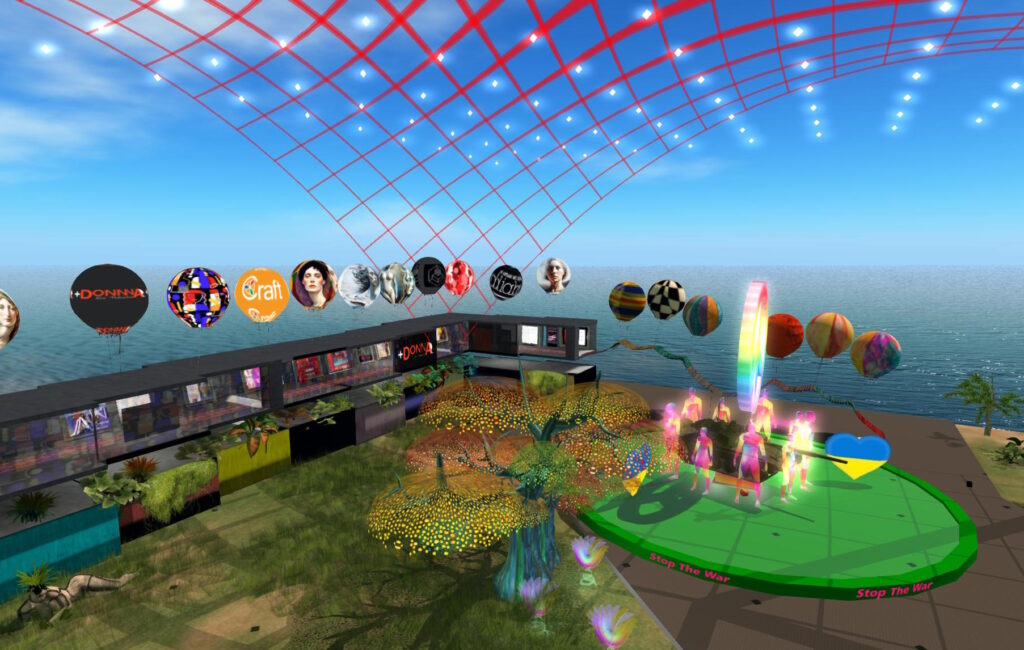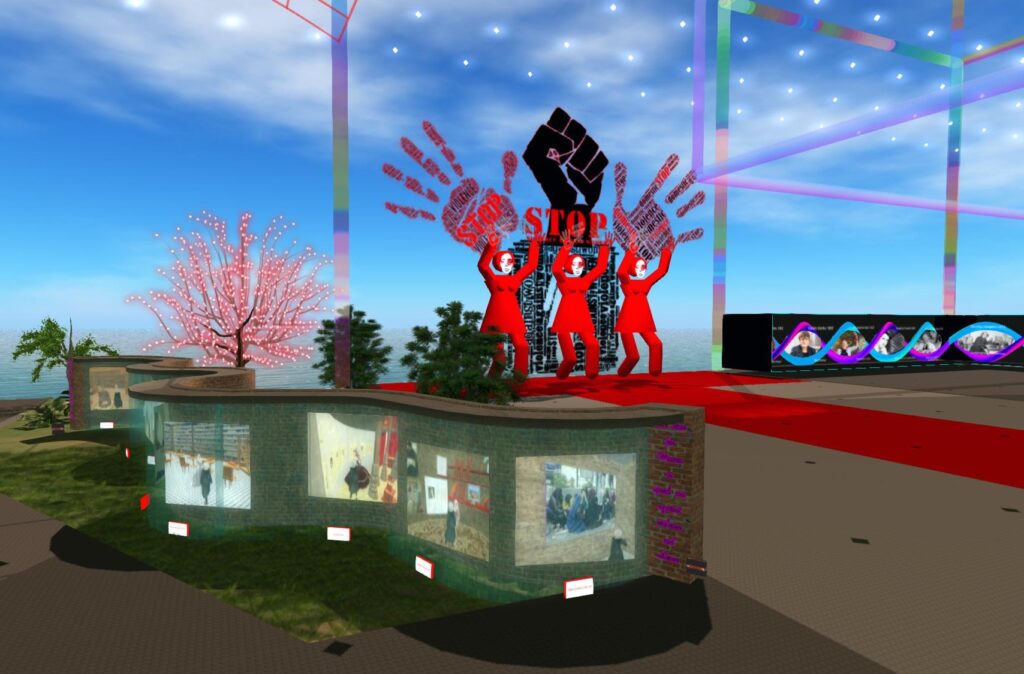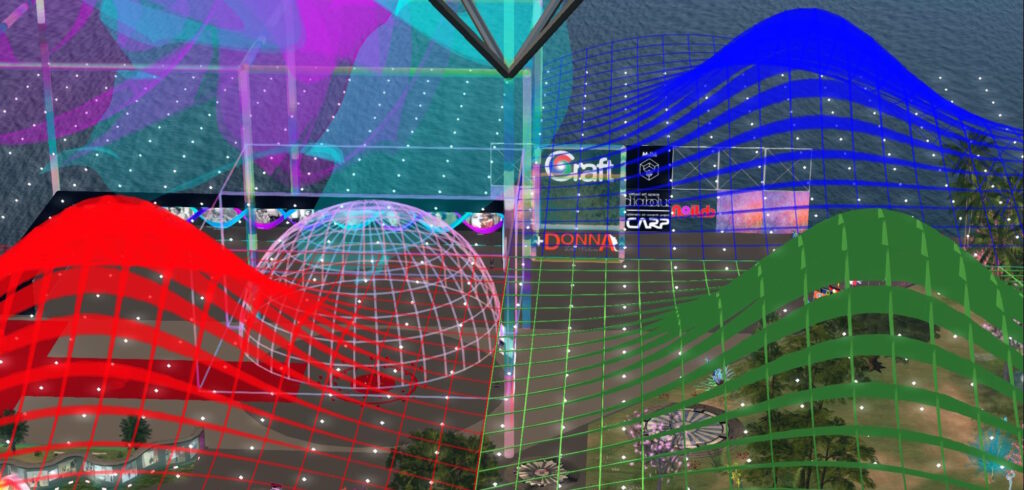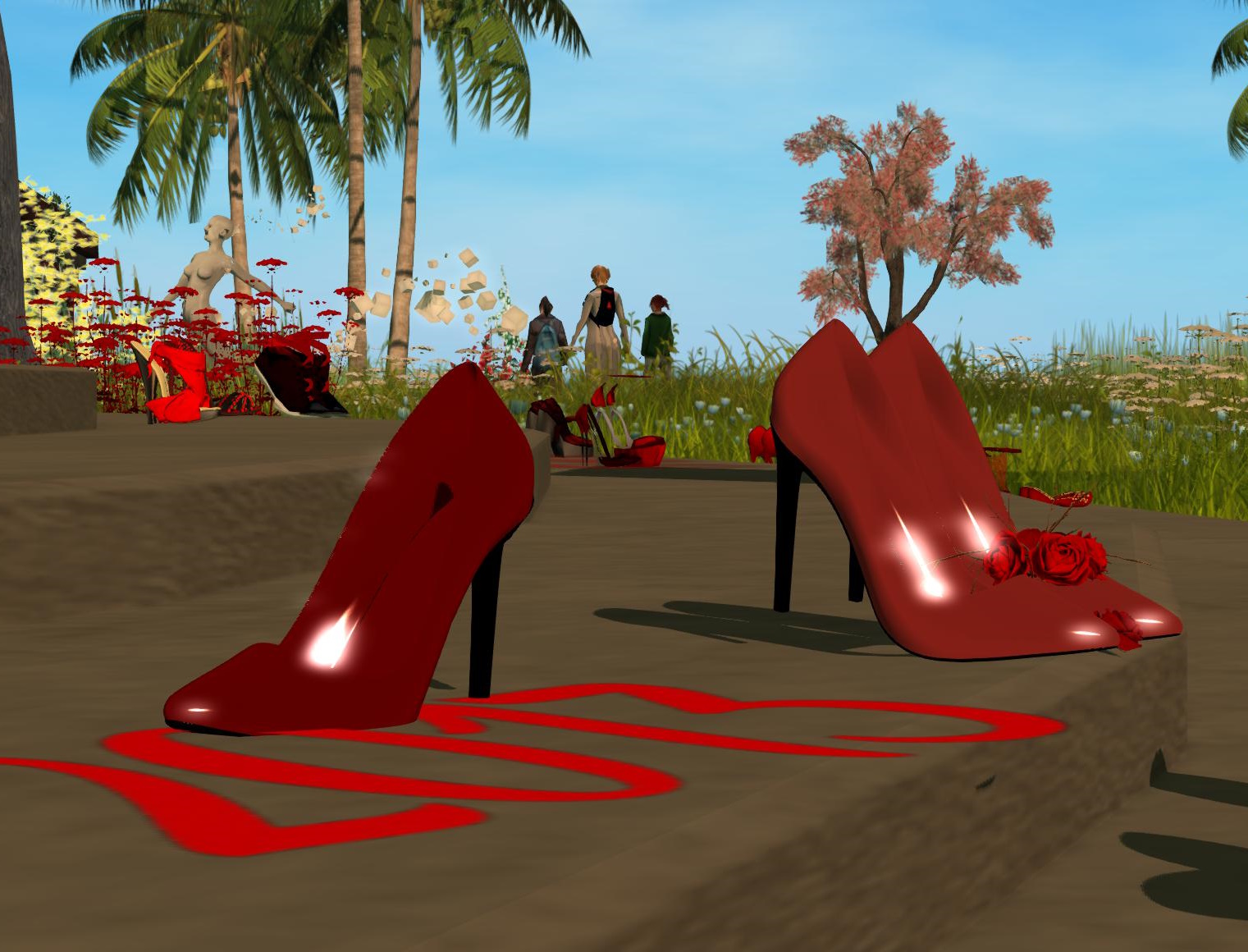In the immersive world of Craft-World, +Donna Zero Violenza (translated “More Women Zero Violence”) is a community that transcends virtual boundaries, comprising both women and men dedicated to addressing the difficulties suffered by women. Established in 2022, their mission revolves around combating violence against women and advocating for gender equality within and beyond the digital realm. The collective interview delves into the group’s impactful initiatives, spanning from November 25 to December 31, coinciding with the International Day for the Elimination of Violence against Women. Beyond virtual events, +Donna Zero Violenza actively collaborates with real-world organizations, becoming an example of integration between actions done in the virtual world and those done in real life. Their qualitative impact, commitment to community outreach, and dedication to fostering dialogue make +Donna Zero Violenza a beacon of positive change in the digital landscape and beyond. Below is the interview whose answers were developed collectively by the whole group.

Q: What is Più Donna Zero Violenza? Is it merely a gathering place, or is it something more?
A: We are a group of individuals, both women and men, who initiated the +Donna Zero Violenza project in Craft World Opensim in early 2022 to address issues related to the female condition.
As avatars/individuals coming together in Craft World, we discovered common interests, including a commitment against violence towards women, advocating for the recognition of their rights, and, more broadly, the rights of all individuals.
Like every year, also in 2023, as part of the International Day for the Elimination of Violence against Women, +Donna Zero Violenza has planned a series of initiatives, asking the question: Is there still tomorrow? This query, inspired by Paola Cortellesi’s film “C’è ancora domani” [“There is still tomorrow”] prompts reflection on the work still needed to move from questioning to affirmation.
Recent news, reporting over a hundred femicides in 2023 in Italy, justifies this questioning, and we aim to address obstacles that still make it challenging to recognize equality and equal opportunities for women in every field of study and work.
This is why we have built a “schedule” of events that will begin on November 25th and end on December 31st, with these aims:
to enhance women as protagonists of events that have transformed society itself in a direction of equality and parity;
reflect on how they are entrusted with the first approach to the different genders through orality, because they have always spoken the first “words” with which boys and girls enter into gender dynamics, and understand that this role can make them the main promoters of the desired cultural change, which valorises differences in the perspective of equality;
exalt the value of women’s gaze alongside the male gaze; offer prospects for enhancing the woman’s body, beyond the stereotypes of patriarchal society;
bring out a comparison with our past and with other geo-cultural areas regarding gender relations.

Q: How does advancing such an initiative in a virtual world impact people’s real lives?
A: Primarily, it influences us as individuals and as a group. By participating in these initiatives, we have collectively grown in awareness of violence-related issues. We strive to communicate these issues to others, encouraging more people to participate in events we organize, sharing them across other virtual worlds and social networks.
We also connect our activities in the virtual world with like-minded groups in real life, collaborating with physical world associations such as the Zonta International Club, Anti-violence Centers, One Billion Rising, and others with shared interests.
After training with a psychotherapist and president of an Anti-violence Center, we established a listening service for those experiencing violence in virtual and real life, offering support and guidance and directing them to the national violence helpline and local centers.
Our project’s value lies in the close connection between real-world and virtual-world interests grown in this virtual reality, in our virtual home that we have established in Craft World, with continuous exchanges between the physical world and the metaverse, offering a model of virtual engagement not just for gaming but as a space for addressing real-life issues.
A community where you can dance on Saturday evening, or on all other possible occasions, and at the same time you can reflect and work to help provide solutions to people’s real problems. Because we cannot forget that once the PC is turned off, each one inevitably finds themselves confronting reality and all that it entails.

Q: What more can this initiative offer compared to initiatives created in the real world? How does it expand its possibilities?
A: Our project’s value is qualitative rather than quantitative, focusing on the quality of life for each person/avatar who knows, for example, that they can communicate their distress even in the virtual world to trained individuals who listen without judgment and guide them towards awareness of being a victim of violence, the first step to defend oneself from it, up to the completely voluntary choice of turning to an Anti-Violence Center to be followed towards the possible, always voluntary, report of the abuser.
If we believe that the contemporary world needs more personal and less social communication, if we believe that engaging in dialogue with cultures from different countries to discuss the present and future is a valuable opportunity to understand and convey who we are and what we believe in, we realize that precisely in worlds accessed through viewers, such as Opensim and Second Life, where gathering in small groups with shared interests allows for fruitful discussions on various topics, our initiatives, reaching the real world through videos and podcasts, can hold significant depth and dissemination. Our initiatives, dedicated to themes of notable social and cultural value, can indeed inspire others to grasp how the avatar serves as a medium through which cultures, passions, and non-trivial interests emerge, rooted in real life and oriented towards solving the problems encountered therein.
Furthermore, let us not underestimate the importance of reaching people from multiple countries and implementing initiatives that are impossible to implement in the physical world, due to the economic, organizational and logistical commitment.

Q: How do you reach people in OpenSim, a place made by different worlds often closed in their particular interests? Do you think there is more work to be done in terms of communication?
A: Reaching different worlds, contacting their “inhabitants,” and creating “inter-grid” communities are our objectives, because we have something to say, to tell and to show.
We do not hide the fact that this opening up to others is challenging, but it must be done, with patience and tenacity.
With this in mind, we plan to tour other Opensim grids to introduce our project and engage their owners.
We also try to take great care of communication through our web network, but there is still much work to be done. The key is to maintain confidence in the value of our personal and group efforts.

Q: We live in a world where the male aspect of ourselves, in its less healthy expressions, dominates in men but all too often also in women. Will we be able to ‘move this mountain,’ to change an entire culture, especially in light of the over 100 femicides committed in Italy just this year?
A: As volunteers, we took on the responsibility of providing an important service by opening the Listening Desk, offering a dialogue and an opening to those in need. The awareness of the importance of this opportunity arises from the current situation highlighted by the news. We believe it’s crucial, both in the real and virtual world, to contribute to spreading the value of respect for people in the broadest sense and, more specifically, respect between genders. We don’t shy away from the civic duty to reflect on and make others reflect on the severity of femicide. We aim to address everyone, men who are or discover themselves to be violent and women who have not yet recognized the risks they face if they can’t interpret the early signs of violence. We don’t know how much of this mountain we can move, but we trust that each of us can move a handful of earth or a stone. We strive to do so with conviction.
The +Donna Zero Violenza Group
Reach the group in-world through this slurl:
hop://craft-world.org:8002/Piu%20Donna%20Zero%20Violenza/80/98/23


Let’s talk about Misogyny…
Misogyny obviously is not generally directed against the female gender, but rather aims at excluding individual women from social positions.
This makes clear that one must assume an „economy“ of contempt for women. Because if men’s aggression is not directed against women as such, but rather against their breaking out of assigned roles, then it obviously fulfills a disciplinary function. In other words: Misogyny must be seen as an instrument with which women are to be deprived of „male-coded benefits and privileges“. Since leadership positions, influence, money, status and prestige are not unlimited in a society, it is rational for men to exclude women from competition for these goods.
With this it shall not be questioned that misogyny also has an emotional and psychological dimension. Quite one the contrary: often the perpetrators’ shame or injured pride trigger the violence. But at the same time the rational function of such emotional reactions must be acknowledged. This is how I want to defines the term from the perspective of those affected: Misogyny occurs when women experience hostility in a way that serves to control and enforce gender-specific norms and expectations.
While sexism primarily has the function of justifying patriarchal relationships and naturalizing them with biological references, misogyny creates the relationships in a tangible way. I would compare this with the effectiveness of „civil society order and state executive power“. Sexism then would be the discursive system, misogyny the threat and exercise of violence with which rule violations are punished.
This said I can only affirm, that I see „+Donna Zero Violenza“ as a very positive and at the same time necessary initiative in Craft-World which definitively is a(nother) big step to establish the connection of virtual worlds with the real world.
Thank you Tosha for this comment and for your appreciation of the +Woman Zero Violence project.
I would like to hear from you how you think misogyny can be challenged and prevented in both the virtual and real world? Do you have any suggestions or examples of good practice?
How do you relate what you write to the current situation of women’s rights in Italy and in the world? Do you see progress or setbacks in the fight against misogyny?
One reflection to make is also on the role of media and digital technologies in the spread and resistance to misogyny. For example, traditional media and social networks convey sexist and misogynistic messages, but also offer spaces for denunciation, solidarity However, digital technologies and virtual worlds create new opportunities and challenges for the expression and representation of the female body.
Rosanna, I really wished I had a better answer to your first question. Or any at all.
I am, however, convinced, that we need conceptual tools to recognize and name misogyny so that it can no longer be denied.
This is the only way we can ultimately resist it. Women (and also men!) must be empowered through knowledge to find solutions to many individual and often everyday situations of misogynistic aggression. This is important – both for people in general and for us as women to make a progress in this regard.
I am sure it will be a long way. Because unfortunately it doesn’t happen „automatically“ – for example when women have more freedom and can live their lives more self-determined – that mysogeny disappears or even lessens. On the contrary: In many aspects do we experience a kind of rollback into mysogynic behavior just now.
I can say very little (or better: nothing) to the situation of women in Italy. But I can tell you f.e. that the German foreign minister (a young woman) is being inundated with accusations that are clearly mysogynic (too young, too silly, taking too much care of her looks, being too submissive when meeting with other foreign ministers, etc.), while another prominent woman in German politics is being shamed because of her body (she is not slim „enough“) in public comments.
Or look at the situation of Iranian women, or the women of Afganistan. They are just now being deprived of all those (few) rights they had before. For them goes: No more education, no more work, not even leave the house without the company of a man.
Another look that is worsewhile is to the USA. The right of abortion practically completely taken away from the American women.
Also many other countries go that way: Poland f.e., Hungary. Or various Latinamerican countries: Argentina, El Salvador, to just name a few.
And – according to UN statistics, world-wide 89.000 women were murdered in 2022. More then in the past twenty years!
I find it hard to see any „progress“ here. And yet… It might be a sign after all, that women’s fights are positive. But what a toll do we have to pay!
I think there was at least one movement lately, that has really served our fight: „Metoo“ opened the discussion to the general public, it made it clear, that sexual aggression is NOT a private problem of a woman and it has opened the way for other progressive movements, like One Billion Rising or the online movement of Più Donna Zero Violenza. Both vital for the feminist fight!
A lot will, of course, depend on the education and socialization of the next generations.
So, I would like end with a call to the mothers and fathers worldwide: Educate you children well. Give your daughters a lot of self estimation on their ways, and show your sons, how not to be violent. And be yourselves a good example!
Thank you for your insightful comment and sorry for not having read it before. Your analysis of misogyny as both a structural and disciplinary mechanism is particularly compelling. The distinction between sexism as a justificatory system and misogyny as an enforcement tool resonates deeply, especially in the context of power dynamics and societal structures.
The idea that misogyny serves to exclude women from traditionally “male-coded” privileges is crucial in understanding the resistance many women face when breaking out of assigned roles. It also highlights why initiatives like “Donna Zero Violenza” are so important—not only as a symbolic statement but as a concrete effort to challenge these norms, even within virtual spaces.
Virtual worlds, like Craft-World, can be a powerful arena for social change. They allow us to experiment with alternative social structures, challenge real-world biases, and build communities based on equality and respect. Connecting these spaces with real-world activism makes initiatives like this even more meaningful.
Thank you for recognizing the value of “Donna Zero Violenza”. Let’s continue to push for inclusive and fair environments, both online and offline.